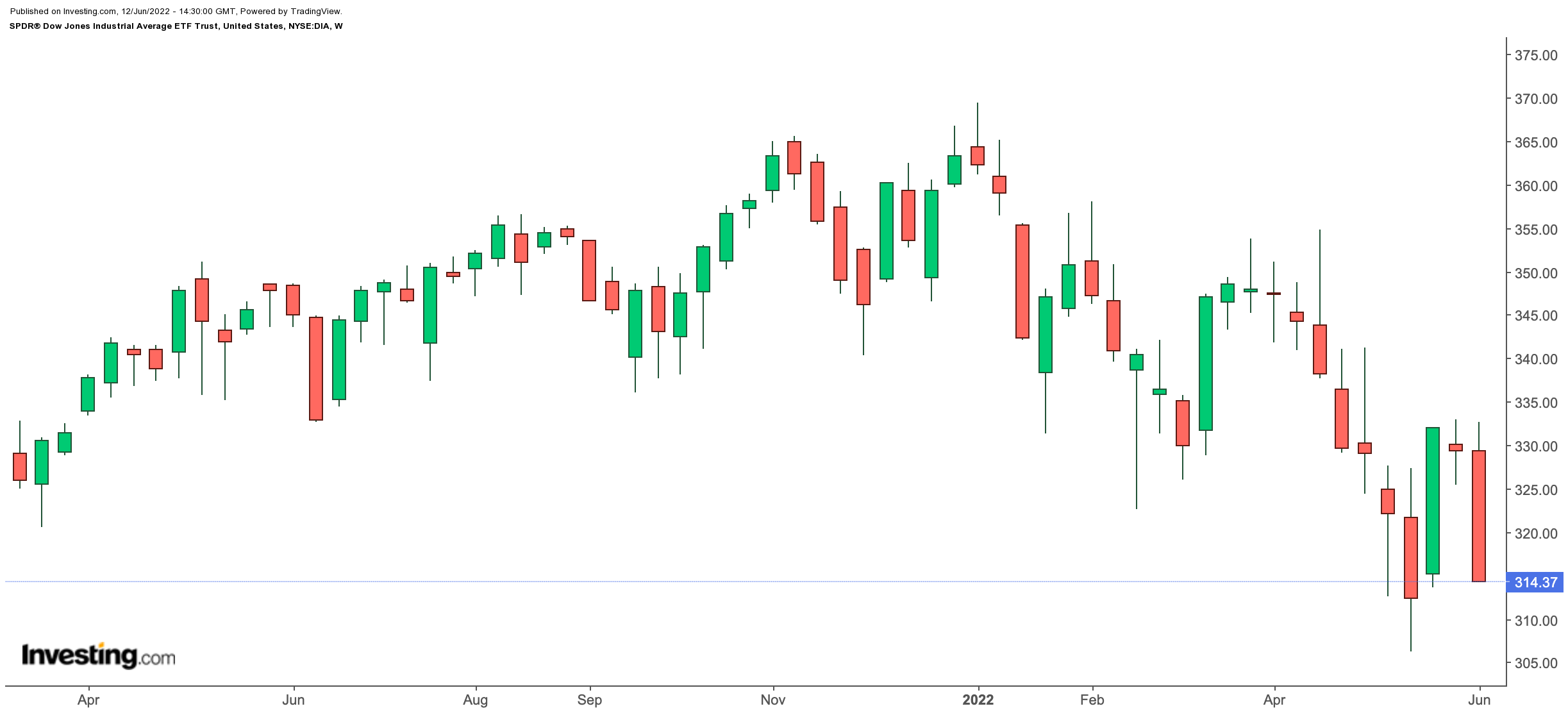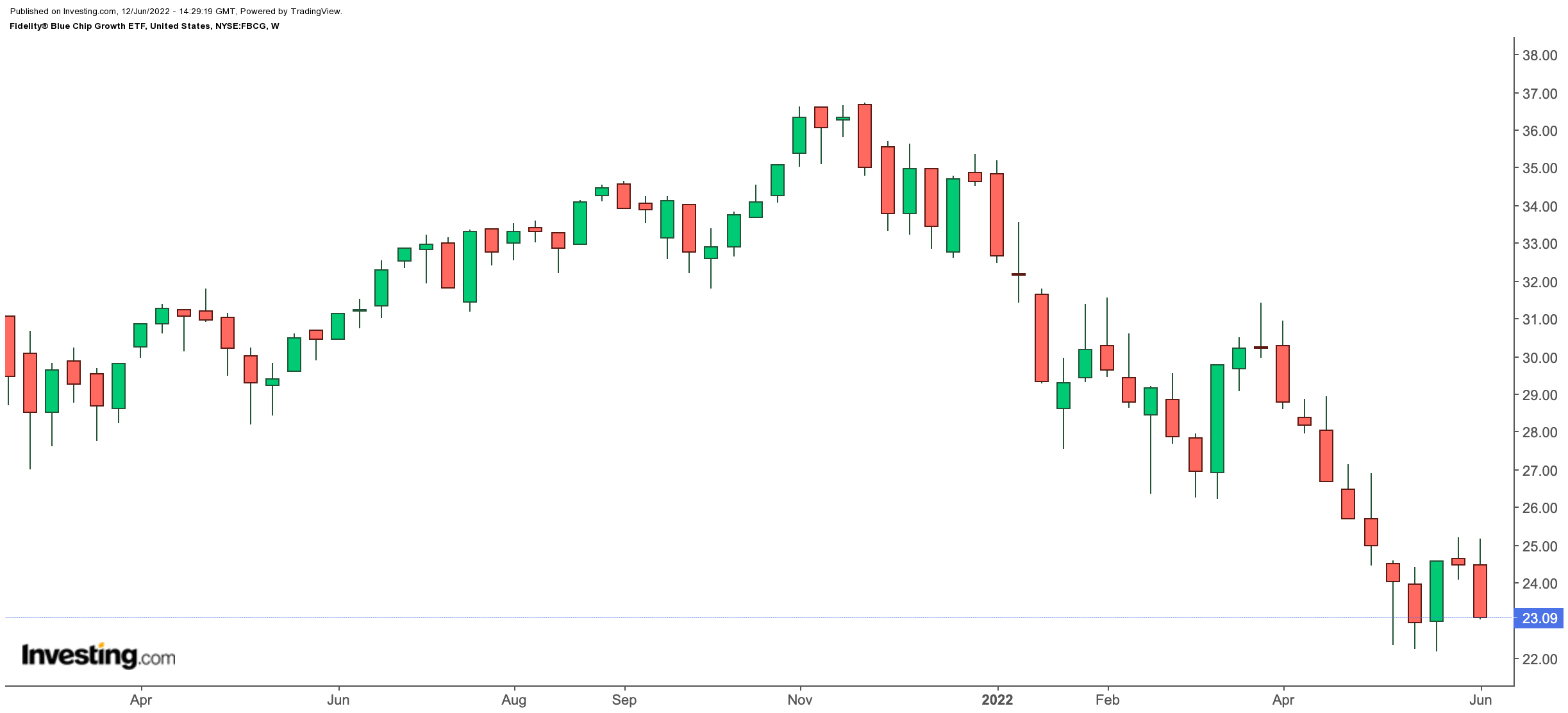Wall Street finished last week awash in red as US CPI increased more quickly than expected in May, accelerating the debate as to how much the Federal Reserve will raise interest rates in an effort to tame inflation.
The Consumer Price Index, printed hotter than forecast, rising by 8.6% year-over-year. That's the highest for that metric since December 1981.
In addition to red-hot inflation, investors are becoming increasingly worried about the state of the global economy. Both the World Bank and the Fed have recently lowered their economic expectations.
A recent survey by Allianz notes that 43% of Americans are relatively nervous about investing on Wall Street right now, while nearly 60% are seeking portfolio protection. In times of such extreme volatility, blue-chip stocks—or shares of established large-cap companies with solid long-term financial performance—garner significant attention.
Blue-chip companies typically deliver solid returns over time and many regularly increase their dividend payouts. Most are also leaders in their respective industries, show consistent cash flow growth, and have wide moats.
Retail investors usually sell their blue-chip stocks last. Thus, they are also regarded as the bedrock of most portfolios.
With that said, here are two blue-chip exchange-traded funds (ETFs) that may appeal to readers looking to benefit from upside moves in leading names in the second half of the year.
1. SPDR® Dow Jones Industrial Average ETF Trust
- Current Price: $314.37
- 52-week range: $306.28 - $369.50
- Dividend yield: 1.89%
- Expense ratio: 0.16% per year
The first fund on today’s list is the SPDR® Dow Jones Industrial Average ETF Trust (NYSE:DIA), which invests in 30 Wall Street “blue-chips.” The fund was first listed in January 1998 and has $28.05 billion in net assets. Put another way, it is one of the oldest and most important ETFs on Wall Street.

DIA tracks the Dow Jones Industrial Average (DJIA), first created in 1896 by Charles Dow. Thus, it is the oldest continuous gauge of the health of US equities and is widely followed by investors both in the US and globally.
At present, information technology (IT) and healthcare names have the largest share—with each segment over 20%. Next come financials (15.56%), industrials (14.16 %) and consumer discretionary (13.49%).
DJIA is a price-weighted index. Therefore, shares with higher prices impact the value of the index more than lower-priced stocks. Understandably, as stock prices change, so can their weighting within the index.
The top 10 stocks on the index comprise over half of the portfolio. Among them are United Health Group (NYSE:UNH), Goldman Sachs (NYSE:GS), Home Depot (NYSE:HD), Microsoft (NASDAQ:MSFT), McDonald’s (NYSE:MCD) and Amgen (NASDAQ:AMGN).
On Jan. 5, DIA saw a record-high. However, it is now down almost 13.5% year-to-date and hit a multi-year low on May 20.
By comparison, the SPDR® S&P 500 ETF (NYSE:SPY), which tracks the returns of the S&P 500 Index, has lost almost 18% of its value since January.
Trailing price-to-earnings (P/E) and price-to-book (P/B) ratios for DIA stand at 16.46x and 3.65x. Given the risk-off environment on Wall Street right now, the ETF could see new lows in the weeks ahead. However, buy-and-hold investors might regard further declines as an opportunity to invest in DIA.
2. Fidelity® Blue Chip Growth ETF
- Current Price: $23.09
- 52-week range: $22.18- $36.73
- Expense ratio: 0.59% per year
Our second fund is the Fidelity® Blue Chip Growth ETF (NYSE:FBCG). It invests in close to 250 companies. At least 80% of the fund's holdings are blue-chips.

FBCG is an active, non-transparent fund that was first listed in June 2020. Unlike most other ETFs, non-transparent ETFs do not have to report their holdings daily.
According to the fund's most recent Q1 report, at the end of March, over 55% of the portfolio was in the top 10 stocks. Moreover, more than 80% was in the leading 50 companies. Thus, FBCG is a top-heavy ETF.
In terms of sectoral allocations, we see IT (40.38%), consumer discretionary (27.98%), communication services (14.18%), healthcare (6.22%), and industrials (5.56%).
Last quarter, Apple (NASDAQ:AAPL) had the largest slice with 11.27%. Then came Microsoft (NASDAQ:MSFT), Amazon.com (NASDAQ:AMZN), Alphabet Class A (NASDAQ:GOOGL), NVIDIA (NASDAQ:NVDA) and Tesla (NASDAQ:TSLA).
So far in 2022, FBCG has lost a third of its value. Put another way, the market stress has meant significant drawdowns for the high-growth names held in the fund. Still, readers who expect these blue-chips to soon begin a leg higher could consider investing around these levels.
